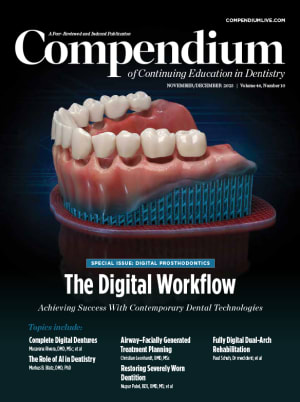Three Foundational Pillars for a Thriving Practice
As the dental profession continuously evolves, there are foundational elements to the business of dentistry that are essential for practice growth, stability, and health. These pillars help keep practices productive and profitable while also reducing stress in the office. Three of these foundational practice-building pillars are presented herein.
1. A solid, consistent scheduling system. Without a consistently honored and executed scheduling system in a practice, the workweek can feel like a roller coaster. When a schedule is left unchecked, it can cause dentists and their teams to fall behind, be busy but unproductive, and even pit team members against each other; these are some side effects accidental scheduling can create. Dentists should evaluate their day-to-day scheduling system and determine if they and their team are all on the same page. Everyone should know how to schedule correctly.
Some characteristics of an effective schedule include the following: (1) It is pre-blocked to half of the practice’s daily production goal. This allows for room to build out the day as needed while ensuring stability in the daily schedule. (2) It reflects doctor and assistant time to make sure appointments are being staggered appropriately for time management and positive patient experience. (3) Patients’ records are appropriately documented to ensure the practice is prepared for, and a suitable amount of time is scheduled for, each appointment. (4) The entire team has sharpened verbal skills and confidence in the key conversations that help appropriately and successfully schedule patients, so that patients are not just getting scheduled but are committed to their appointments.
2. An enjoyable and convenient patient experience. From start to finish—ie, from scheduling an appointment to patient check-out—the practice must make it easy for patients to get what they want or need. Any patient “touchpoints”—key conversations and encounters with patients that shape their perspective of their patient experience—that may need improvement should be addressed, such as the following:
• Find ways to make it easy and stress-free for patients to complete their new patient forms before their appointment.
• Help patients make the financial investment to achieve their treatment goals, whether for an improved smile or needed treatment. Dentists and team members should be adept in their verbal skills in both the clinical consultation regarding treatment and financial conversations.
• Have financial options available for patients, and maximize patient financing. A treatment coordinator should be at the helm who is comfortable and confident discussing treatment and fees.
• Put a patient membership plan in place, and provide a text-to-pay option.
• Make it easy for patients to schedule appointments, and to leave a review.
There are many ways to streamline the patient experience and make it easier, more convenient, and more feasible for patients to access the practice’s care. Don’t let the busyness of the day detract from making the patient experience a top priority.
3. A practice culture committed to excellence. Leadership and the stewardship of a practice culture that upholds core values and a commitment to excellence plays a large role in a practice’s success. A healthy practice culture determines team engagement, team loyalty, patient engagement, and practice growth. It influences who will come to the practice as a patient and as an employee in the future and shapes the level of fulfillment the dentist and team members get from their work. Fulfillment is found in workplaces and businesses that have a commitment from both individuals and the team as a whole to delivering excellence.
Ways to cultivate practice culture include team meetings that are intentionally planned. These meetings should clarify shared responsibilities for executing the agenda and provide focused time for training on skills, systems, and desired outcomes. Also, consistent and productive daily huddles help set the standard for the day. A good huddle that is short, to the point, and focused on finding opportunities in the day can impact growth and improvement on a day-to-day basis.
Leadership that sets clear expectations for the team and for each individual is vital to the culture of the practice. Clear roles and responsibilities, planned and intentional onboarding and training of new employees, and the execution of the aforementioned team meetings and huddles are the recipe to reducing miscommunication, underperformance, and conflict—not to mention achieving and exceeding goals.
About the Author
Carrie Webber
Owner and President, The Jameson Group
(jmsn.com), a dental management, marketing, and hygiene coaching firm
